It’s a bit hard to imagine a time when the Ford Econoline (or the F-Series pickups) actually didn’t dominate their categories. Of course I speak of the Econoline’s long run until it was replaced by the Transit. But in the seventies, the Dodge van was king; in 1977, they outsold the Econoline 226k to 179k. Yet the Dodge pickup was a perpetual laggard and a very distant third to Chevy and Ford. How to explain the Dodge van’s dominance?
Maybe that splendid ’70s color scheme?
I spotted this fine relic parked not far from the UO campus. As I approached, one of our still-plentiful Mercedes w123s photobombed it. It makes for a handy comparison of two very disparate seventies-mobiles.
The second generation vans from the Big Three were a very significant improvement in terms of being domesticated to the expectations of the times. The gen 1 vans had their roots in late 50s minimalism, but that now seemed ages ago, as average incomes (and expectations) were peaking in the early 70s. For families (and others) that placed a premium over space (and space efficiency), these really were a much better family truckster than the traditional wagon: Much shorter, yet a lot roomier.
But it wasn’t families and plumbers that pushed Dodge van sales skywards. Van fever was a raging contagious disease that was the more mainstream analog to the VW hippie vans of the 60s. Even young folks with jobs wanted in on the image of freedom, even if it came with a three year loan from the bank.
Let’s face it; the van is the ultimate automobile form. I don’t say that just because I’m a confirmed van owner and lover, but realistically, evolution is ultimately going to favor the box, for a whole lot of obvious reasons. Especially so when they become autonomous. It’s just a better box for whatever your lifestyle choices and preferences!
And Dodge somehow managed to convey that more successfully than Ford and Chevy, and there’s no doubt that Dodges outnumbered the others in the lifestyle sector.
And that includes the actual RV industry, where the Dodge van cutaway chassis utterly dominated the field, until the market imploded in 1979 and Dodge completely exited it during its crisis of the times. As a former ’77 Dodge Chinook owner, these do speak to me in many familiar ways.
This includes everything from the iconic and legendary TransVan.
To a vast number of Class C motorhomes in all sizes, shapes, colors and textures.
They were once everywhere; now there’s just a few left on the curbs occupied almost invariably by the homeless. But not Dodge motorhomeless.
In addition to bare-bones work vans and cruisin’ vans and RVs, Dodge also did well with the station-wagon alternative set. And that’s what we have here: a Sportsman Royal, meaning the top trim level of the passenger van.
In 1977, Dodge replaced the modest little low-back bucket seats with nice high-back versions, with armrests, even.
Which does not explain why our ’77 Chinook, which came very well optioned and trimmed, still had the old low-back seats. Hmm. I might have kept it if it did have them. We also missed out on that splendid cup-holder engine topper. Oh well. And that nice striped door upholstery.
This is a 127″ three-row van, and it has very fine vintage upholstery. Isn’t that so much more cheerful than today’s drab and dreary stuff? Folks constantly put down the 70s; they don’t know what they were missing.
The third seat. The partial sheepskin uppers are a mystery to me. Why?
And here’s the very roomy cargo area. Another bench seat could be had here, but that left very little room for cargo.
Of course more room was available via a Dodge Maxivan, the first of its kind with an extended rear and seating for 15. Or 12 and lots of luggage. Or just long rolls of carpet.
And that rear addition was soon lengthened further, and was given some proper windows, in 1978.
Looking at these two Maxivans shows how in addition to the longer rear cap, in 1978 other significant changes were undertaken, with larger side windows, and the sliding door was moved to the front.
Things get even more complicated starting in 1994, as the front end was restyled in the aero fashion of the times. But it was strictly an external face lift, as things inside were still mostly stuck in the 70s.
In 1998 there came another facelift, and although the basic styling was similar, this one involved much more under the skin. The front end is a bit longer, and that allowed the engine to be moved forward, which finally reduced that huge “dog house” engine cover in the front compartment. And the whole front compartment was completely re-done, with all-new dashboard and other elements. The front passenger’s seat was moved forward because there was finally room for it, as the engine was offset to the right and used to eat massively into the legroom area. The driver’s seat might have been moved up a bit too. The outside rearview mirrors were also now the modern style mounted near the front of the window, which had lost its vent pane.
The result is that the longest Maxivan was now 231.2″ long overall, or some 20″ longer than the original Maxivan.
This ’77 was the last year for the original-style body, with the side door set back a bit. That small window was essentially the 18″ plug that defined the difference between this and the short wheelbase (109″) versions. The sliding door arrived in 1975, as an option to the two outswinging doors.
Here’s a swb (109″) version, with the boxier front end that arrived in 1979.
The side-hinged rear door apparently was an option but so popular that in became standard in 1977 on the Sportsman passenger van.
The white spoked wheels are of course so utterly period-correct. Unless you lived through the white spoke era, you’ll never be able to imagine just how popular they were on pickups and vans. My ’66 F100 had them when I bought it in 1987, and one of the first things I did was go to the junkyard and find some original style steel wheels and hubcaps.
I could go on and on about Dodge vans, having owned three as well as the spiritual successor to it, the Promaster.
What I really need is not a Peugeot grille for it, but a Dodge one. Too bad it’s not still sold as a Dodge in Mexico or such. I’m a Dodge van lover so the Promaster will always be a Dodge in my heart.
(note: this is a new and revised version of an older post)
Related CC reading:
1971 & 1979 Dodge Maxivans – Dodge Pioneers the Really Big Van
1976 Dodge B100 Short Wheelbase Van
1994 Dodge Ram Van 150 – Ram With A View by JP Cavanaugh



























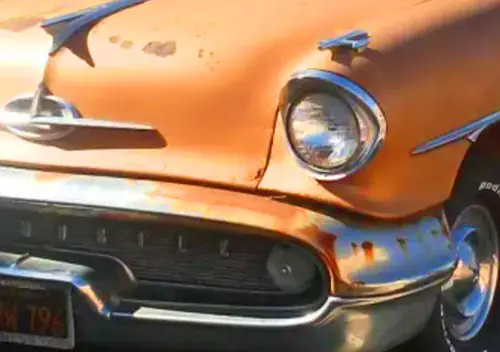
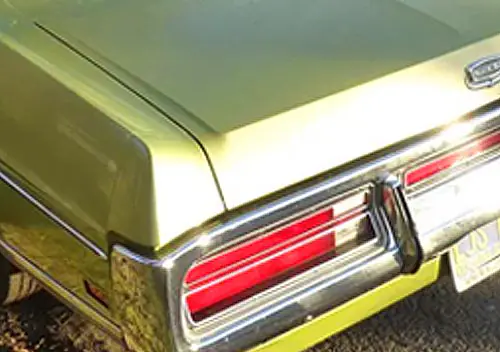
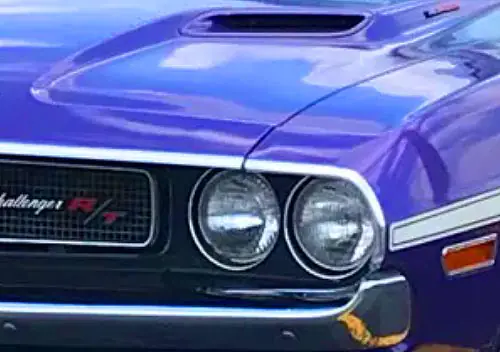


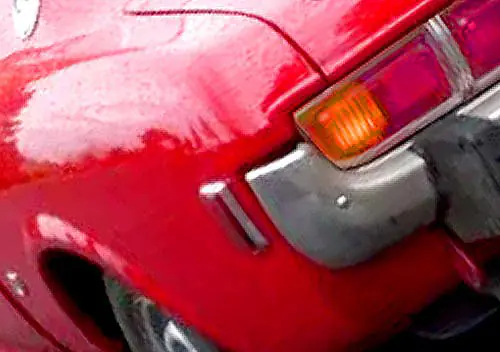

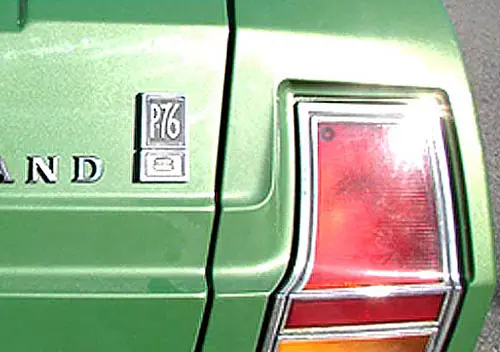
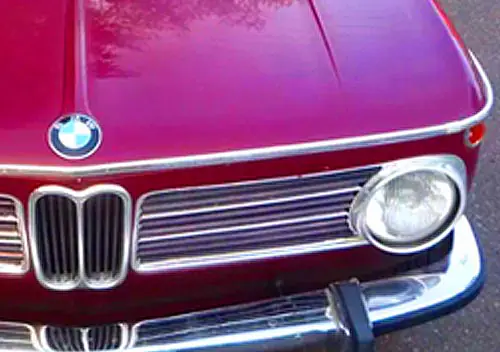


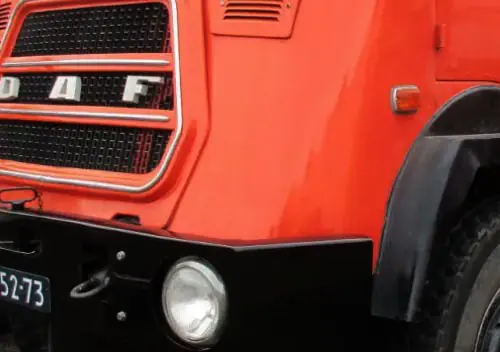
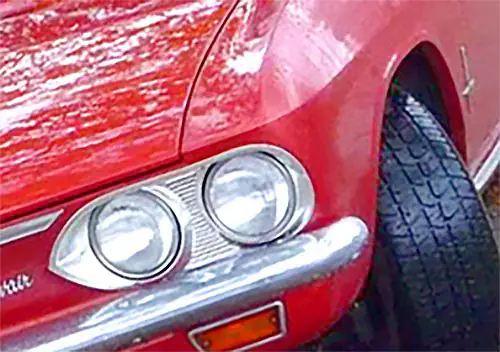
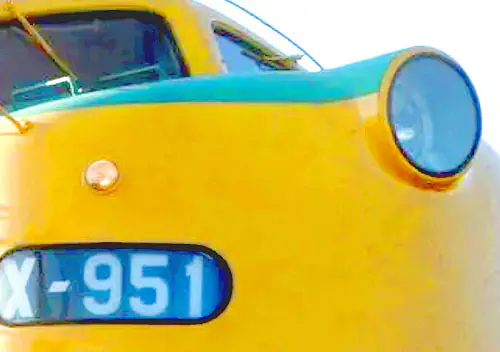
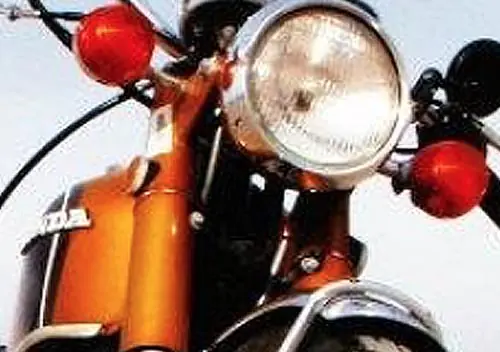
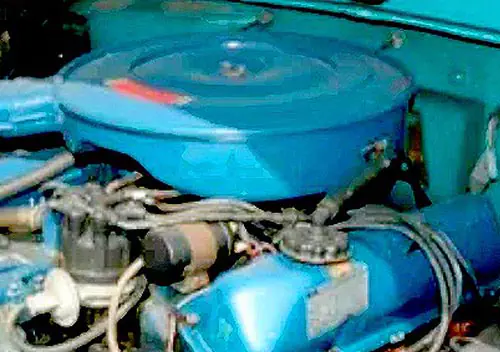
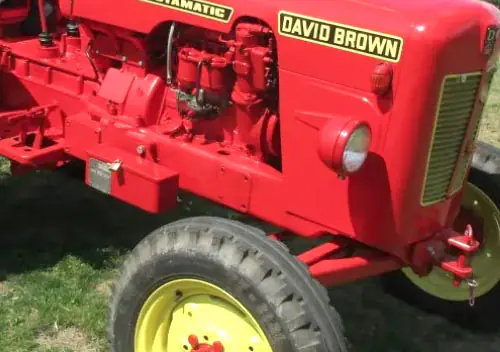
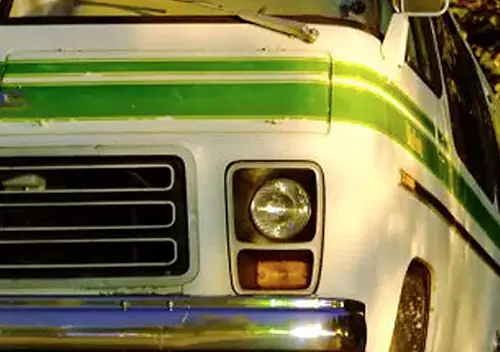

This is a 1970’s Dodge. If you had another seat in the rear there would be no room for the buckets of oil, tools, and spare parts for the 360. Not to mention a couple of cases of ballast resistors
One thing I just noticed is that Dodge mucked with the side windows several times, not just in 1978. 1971-73 vans had two pop-out windows on the driver side that served the 2nd and 3rd row seats, which were separated by a fairly thick body-color post, this style can be seen on the early brown MaxiVan shown here. Starting in 1974, these windows were widened slightly, and the post between the two pop-out windows became thinner and was blacked out and barely visible. This style can be seen on the subject van in both exterior and interior shots. Still later, the post disappeared altogether and a single wide window replaced the previous two narrow ones, as seen in later vans shown here. I’m not sure when this occurred, and the change was apparently made on cargo vans with windows before it was on passenger versions.
I’m sure there were a lot of factors that drove these vans’ popularity, but that extra length vs Ford and GM gave the Maxivan pretty much 100% market share in the rolled flooring installer and airport shuttle segments. I test drove a new ‘82 or 83 Dodge van, Slant Six and I think even 3 on the tree, but the lack of power steering on the unit that was in stock and priced right stopped my impulse buy. I bought a pickup instead, and it was almost 40 years before I bought another van (not counting a VW). The new one still has a six, though bent and not leaning, but automatic and power steering.
The Econoline also got an extended-body “Superline” in 1978, so the Maxivan wasn’t alone, but presumably Dodge’s more aggressive pricing or other factors did make the Maxivan seemingly more popular until later years when the Econoline became the best seller.
I worked for a pari-transit company in the late 80’s and we had Mopar, Chevy and Ford vans in various conversion. The Fords were awful, the Chevys OK and the Mopar’s were bulletproof. We had some that went 400K without overhaul of engine or tranny. The only issue was the sliding doors, which were not meant to open/close 50+ times a day.
I would agree that the predominance of Dodge (and some Chrysler Corp vans wore Plymouth badges as well, in the era) was due to aggressive pricing, especially for the fleet market. Most every church van was a 15-passenger Dodge. One rarely encountered a van-based RV that was based on a GM or Ford. So many folks in the trades drove Dodges that they actually called the cargo van the “Tradesman”!
My ’71 GMC (Not this one) had actually been a bell system van in it’s first life. That is one I wish I could get back.
Dodge B series vans used a unitized body that replaced the traditional separate frame with U-channels welded to the body.
Supposedly this gave the Dodge van more car-like handling characteristics than the separate frame construction used on competing Ford & GM vans. Dodge van owners I knew back in the day would insist their Dodges were less truck-like than other vans. Can’t say I ever noticed a difference myself. However, I never owned a van nor drove them back to back for a better comparison.
I worked for a florist who had a 1977 Dodge van. It was loaded with the slant 6, automatic, PS, PB, AM radio and A/C. It just didn’t break.
I’m wondering if some of the Dodge van sales could be attributed to the purchase of cab and chassis by James Ryder. I’ve read that when he was thrown out of Ryder, he started Jartran. In haste, he called all the manufacturers to get smaller van trucks on the road quickly. He ended buying some very nicely equipped units bound for conversion. I worked with my dad managing 7 shopping malls, and we were always renting trucks. The first three were 16’ from Jartran-two Fords and one Dodge. They all had power windows, cruise, tilt wheel, nice interiors, etc.
Awe the memories
White spokes even looked cool on cars. Gave that NASCAR look
The Van lifestyle was huge in the ’70’s with young people. There were so many vans tricked out with mag/custom wheels, side pipes, additional bubble windows, pop up sunroofs, and CB radios. Not to mention custom paint jobs, and every kind of mural painted on the sides and tail gates. The interiors had captain’s chairs, beds, built in fridges, and while some looked like campers, others looked like bordellos.
The reputation of a tricked out van as a party on wheels contributed to their unsavory reputation with parents and other adults. Those things got terrible gas mileage and the two Gas crises forced many of their owners to look for more economical replacement transportation.
Since I was a loner during this period, I rode a motorcycle. The higher fuel economy allowed me to afford all road trips that I took during this era. Now, Vans are back and popular again.
Keep on Truckin’!
As a passenger, I never grasped that, as even the pre 1992 Fords seemed more car like. Recalling my first time riding in a 1998 Dodge and being excited thinking they finally updated these – well, aside from the modern dashboard, no dice. It’s funny how we can have such different opinions – and I’m biased as I oggle over someone else’s 2000 Ford E150.
Can’t forget this!
The ‘Tradesman’ van was in fact a Dodge name / series .
Truly these were world beaters, hard to kill even on purpose .
My brother bought a 1978 Plymouth “Voyager”, the extended body version with the extra row of seats .
It was spec’d out as a CalTrans crew van and the 360 V8 didn’t suck too much gas and we drove it all across America many times before selling it to Jason The Bike Pimp who gutted most of the interior and added a class III trailer hitch then drove it across America repeatedly to collect vintage Japanese Motocycles, he added pretty much every farkle he could find on vans at the local self-service junkyard, a nearly full length roof rack he’d fill up with exhausts, bare frames and the like .
Never skipped a beat and to get rid of it he had to diligently screw with it to force it to fail California’s stringent emissions tests so he could turn it in to the state for $3,000 as a non-compliant passenger vehicle .
Paul , please let me know if any of your local old Mercedes Diesel Heads want my 1982 240D , it’s time for me to move on .
-Nate
My dad bought a 1971 Dodge B200 Sportsman Royal new in October 1970 for my mom that passed away in 1974 we went everywhere in that van I was 7 years old then it was the Brown White and Brown I use to drive it in high school I use to have a lot of dates in that van lol 🥹Dodge had the best looking vans in that time one thing about my mom’s van is that I am in my 60’s now and believe it or not I have my mothers van to this day Dodge Vans are #1. Getting ready to put a 340 engine in it like they did back in the day I do need a new a/c evaporator lol I took 2 pictures in 1975 one of my mothers Dodge Van and one of my cousins 1970 GTO and yes it is a real Judge back then I didn’t know what that emblem on the glove box meant but I to this day have those two pictures what a treasure and yes I have the Judge tooo
Y’all missed the absolute best outcome of the popularity of Dodge vans: https://www.youtube.com/watch?v=7U2BC5sOltU
A couple of years ago, I moved my business (and my fleet) into a new shop with a good-sized yard. Part of the acquisition was a couple of old abandoned motorhomes without titles that needed to be scrapped.
Because I have the tools and (sort of) the time, I demolished a 32′ ’83 Chevy P30 chassis motorhome (missing the 454) and a ’76 Dodge B300 Class C motorhome. The goal was to salvage the 360/727 for a rebuild and eventual home in my ’75 D200. Along the way, I learned a whole lot about RV construction. The B300 construction (essentially a unibody) surprised me with how well-built it was—but I only discovered it’s sturdiness after stripping off the motorhome body, which appeared to be built by an elementary school group on a field trip in Elkhart, Indiana. The amount of haphazardly-welded angle iron combined with what I can only describe as DIY-level wooden stick framing was eye-opening.
After salvaging the powertrain, selling some select parts (Dana 60, front seats, a few bits and baubles) and then scrapping what steel remained, I made a few hundred bucks—not nearly enough to offset my labor or the dump fees for the “fluff”, but hey, it was free to me.
I’d do it again, as these motorhomes are still THICK in my neck of the woods. Unfortunately, they’re almost all non-runners stashed in someone’s backyard, and they’re difficult to haul without specialized equipment. It’s a real conundrum.
I’ve seen some of those old Class Cs in various states of disassembly and yes, the construction methods and materials are an eye opener.
While I was still worshiping at the alter of Volkswagen and T1 Transporters when these came out (before I painfully learned they were not reliable at either 75 on the freeway, nor bouncing along on dirt roads) but of the domestics, visually, these seemed head and shoulders above Ford and Chevy. Not like the old V dubs which still bring a big grin to my face, regardless of how bad they really were, but these do bring a bit of a smile.
Might have been me imagining things, but I recall driving an early, very early one of these and I remember significant distortion thru the windshield where it made the bend just to the right of the A pillar.
I’d venture to guess a significant contributor to 70s Dodge van sales were of the fleet variety. Back in the days of Ma Bell, these were everywhere dressed up in New England Telephone Co. trim.
I will say, the 71 through 78 tradesmans were the best looking Vans out of all of The Big Three! And they just seemed so more easy to customize. 🤷♀️ Even though they were square just like Ford and Chevy vans were…… They rounded all the corners off and gave the van a cleaner subtly customized look straight from the factory. And the lines flowed better when you added fender flares and the girlwatcher sunvisor and Corvette sidepipes and whatnot. They just looked so much cooler than what Ford and Chevrolet was offering. (Except for the 71 through 76 Chevy van with the chromed grille). Also another guy pointed out on a comment that because the Dodge tradesmans were on more of a unibody chassis, whereas the Ford and Chevrolet vans had full body on chassis construction……. That the Dodge vans handled better and “didn’t feel like a van” per se. Well he’s right the Dodge vans do handle better…… way better! They have a k member in the front similar to what all the Mopar muscle cars had from the same era. And I’ve also believe this help improved The stance especially on the short wheelbase versions (when accompanied with staggered big and little Keystone Klassics! Lol) they seem to have that low in the front, high in the rear muscle car stance. We just restored a 76 version that was bought new by the same guy that’s had it since it was new. Believe it was originally done by the van house in Norfolk,Virginia. We replicated the stripe job that it was done on it and everything we thoroughly went through this van top to bottom, and brought it right back to the way it was when he first got it! It had quite a few problems tho. The battery compartment area was notorious on these b series vans for acid leakage destroying the firewall and wiring harnesses in proximity to the battery. This one had rusted so bad it had literally rotted the driver side floor pan out as well. Thankfully that was enough left of the floor pan for me to patch it all up and reinforce it all with fiberglass. 🤦♀️ Not only that, but with Virginias wet weather, the unsealed screws holding the sun visor above the windshield leaked down into the a pillars of the windshield and rusted them out from the inside out so we had to repair all that. Sent the side pipes out to get rechromed, rebuilt the swivel mechanisms on the swivel bucket seats, and spent countless hours repairing a cracked and broken the s*** plastic grill shell because they don’t reproduce them. As a matter of fact I don’t really reproduce anything for these Vans unfortunately. 🤦♀️ But it came out okay in the end! Put the finishing touches on it back in 2016
I have 2 campers my dad’s 76 and my 84